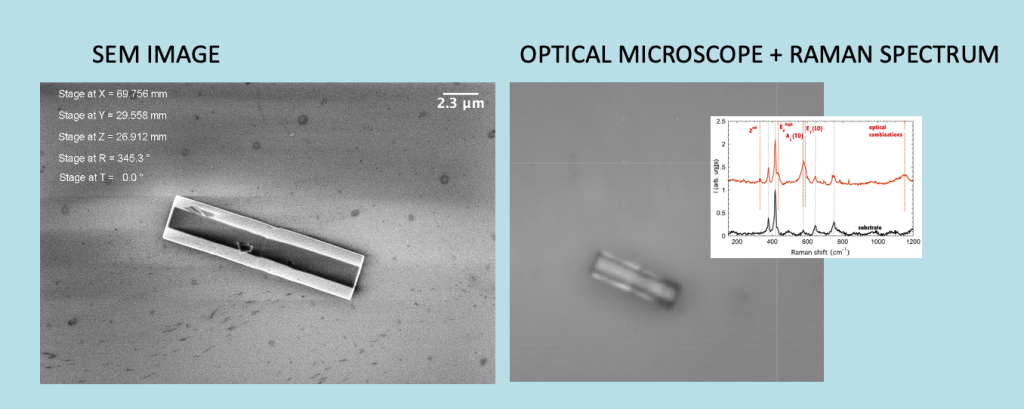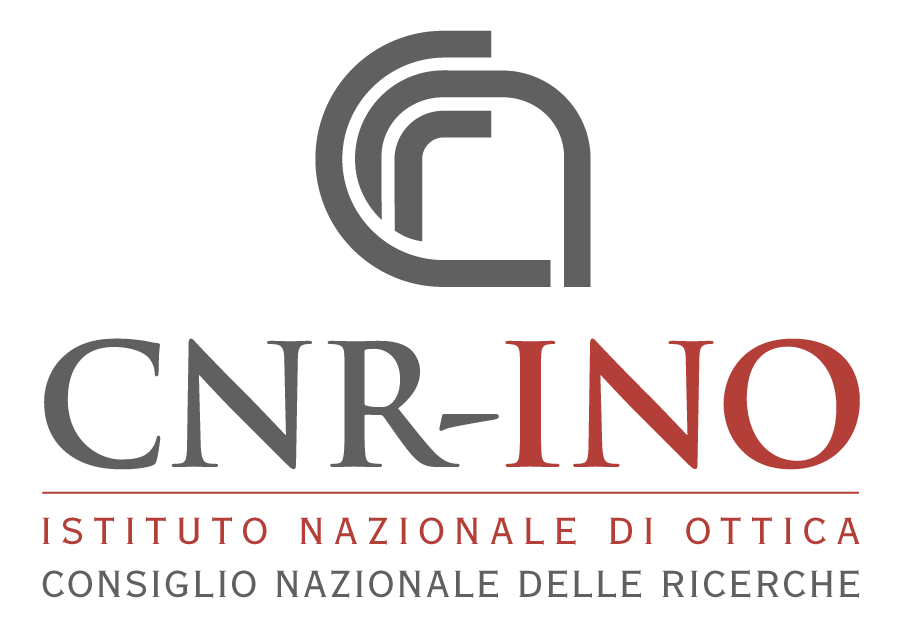Principal investigator: Camilla Baratto
Introduction
The most recent research activities concern the application of photoluminescence (PL) or Raman spectroscopy to materials of technological interest (oxides, semiconductors [1,2,3], 2D materials [4]), to fuel and bio-based plastics, to organic materials (plants [5], or cells [6]). Aspects covered include structural and dynamic characterization of crystalline materials, dimensional effects in nanocrystalline systems, crystallization processes and phase transformations, the recognition of tissue mineralisation and the study of chemometric techniques applied to spectroscopy.
Instrumentation and allowed configurations
The modular system in the laboratory allows to perform micro spectroscopy PL and Raman . With UV excitation (He-Cd 325 nm laser), PL measurements can be performed focusing with 50X LWD and 20X UV lenses in a controlled environment. The sources available for confocal Raman measurements are 442nm/532nm and 785 nm.
Thanks to the integration of a certified cylinder flow system and the use of a Linkam thermostatic cell, measurements can be made in a controlled environment between 77k and 873K. Correlative microscopy measurements between scanning microscopy and spectroscopy are also possible, allowing the morphological information of nano, micro or macro structures to be linked with information of a chemical-compositional nature of the sample.

Linked publications:
- C. Baratto, “Growth and properties of ZnO nanorods by RF-sputtering for detection of toxic gases,” Rsc Adv., vol. 8, no. 56, pp. 32038–32043, 2018, doi: 10.1039/c8ra05357j.
- C. Baratto, E. Comini, M. Ferroni, G. Faglia, and G. Sberveglieri, “Plasma-induced enhancement of UV photoluminescence in ZnO nanowires,” CrystEngComm, vol. 15, no. 39, pp. 7981–7986, 2013, doi: 10.1039/c3c
- C. Baratto et al., “Luminescence response of ZnO nanowires to gas adsorption,” Sensors Actuators, B Chem., vol. 140, no. 2, pp. 461–466, 2009, doi: 10.1016/j.snb.2009.05.018.
- G. Faglia, M. Ferroni, T. T. le Dang, M. Donarelli, F. Rigoni, and C. Baratto, “Vertically coupling ZnO nanorods onto MoS2 flakes for optical gas sensing,” Chemosensors, vol. 8, no. 1, pp. 1–12, 2020, doi: 10.3390/chemosensors8010019
- C. Baratto, G. Ambrosio, G. Faglia, and M. Turina, “Early detection of esca disease in asymptomatic vines by Raman Spectroscopy,” IEEE Sens. J., vol. 22, no. 23, p. 1, 2022, doi: 10.1109/JSEN.2022.3211616
- F. Re et al., “Mineralization of 3D osteogenic model based on gelatin-dextran hybrid hydrogel scaffold bioengineered with mesenchymal stromal cells: A multiparametric evaluation,” Materials (Basel)., vol. 14, no. 14, pp. 1–23, 2021, doi: 10.3390/ma14143852.
- G. Ambrosio, G. Faglia, S. Tagliabue, and C. Baratto, “Study of the degradation of biobased plastic after stress tests in water,” Coatings, vol. 11, no. 11, pp. 1–18, 2021, doi: 10.3390/coatings11111330.

